| Volvox aureus; several specimens (= coenobia) of about 0.5mm diameter; with green daughter colonies. The upper coenobium contains orange zygotes (see below). |
| |
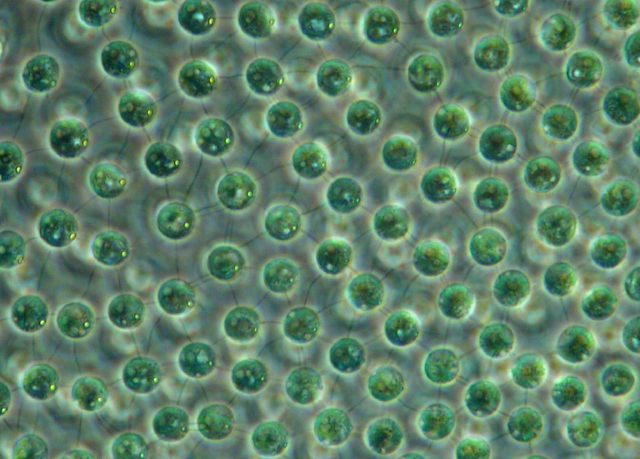 |
| Volvox aureus; focus plane on the protoplasmatic interconnections between the cells (which are lacking in Volvox tertius). In contrast to Volvox globator the cells are circular in polar view. |
| |
 |
| Volvox aureus; the daughter colonies are leaving the "mother" |
| |
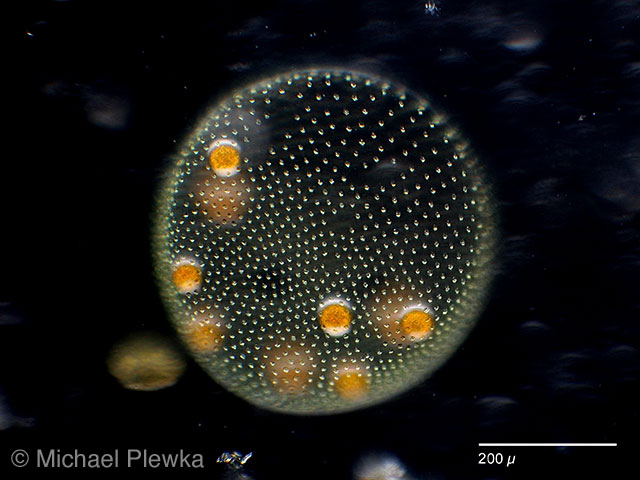 |
| Volvox aureus; the zygotes as the result of oogamy are orange and covered with a membrane (see below) |
| |
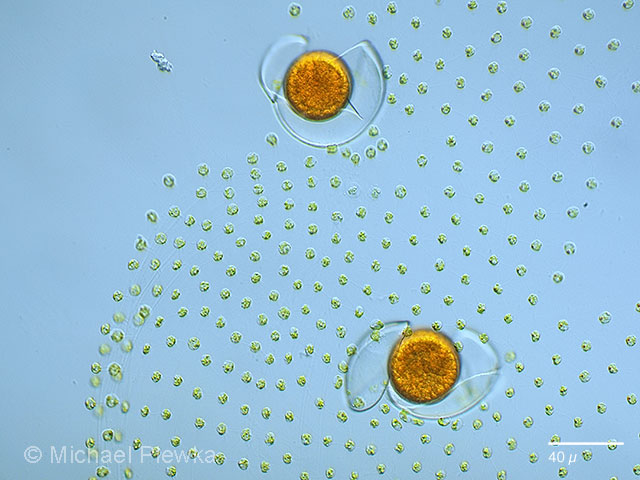 |
| Volvox aureus; the zygotes are covered with a membrane. |
| |
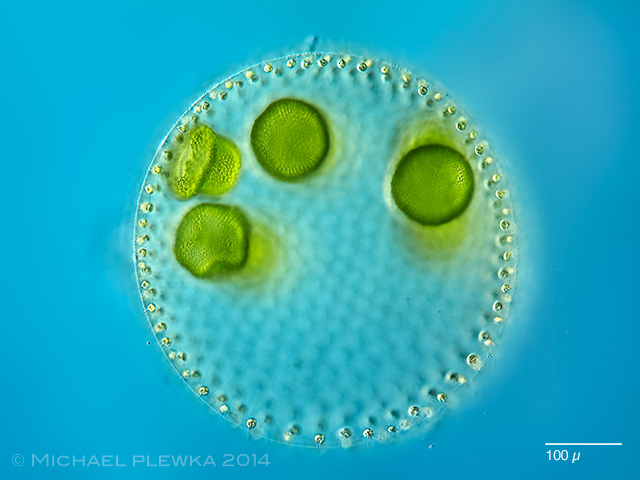 |
| Volvox aureus; embryos in the stage of inversion. |
|
|
| |
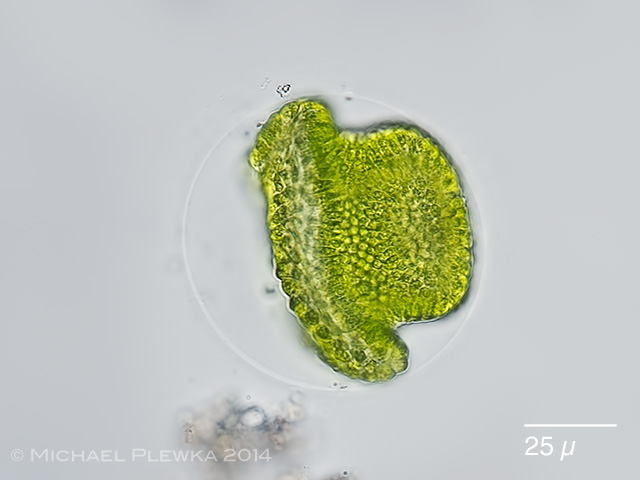 |
| Volvox aureus; embryos in the stage of inversion (Detail). |
| |
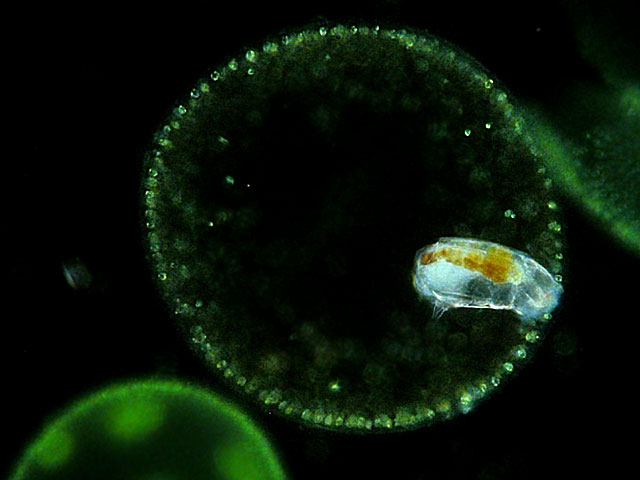 |
| Volvox aureus; may be parasitized by rotifers like Cephalodella volvocicola or Ascomorphella volvocicola |
| |
|
| |
|
|